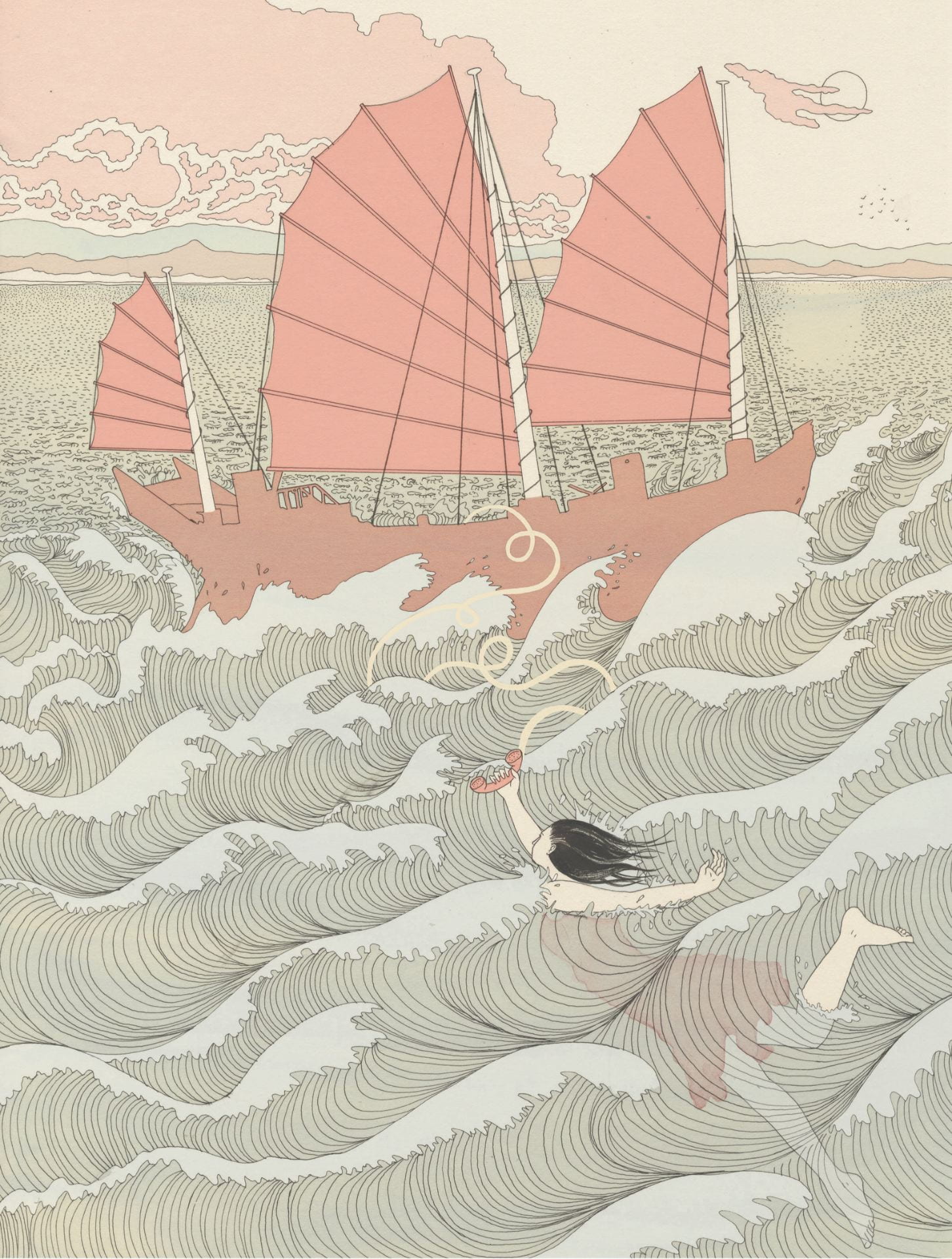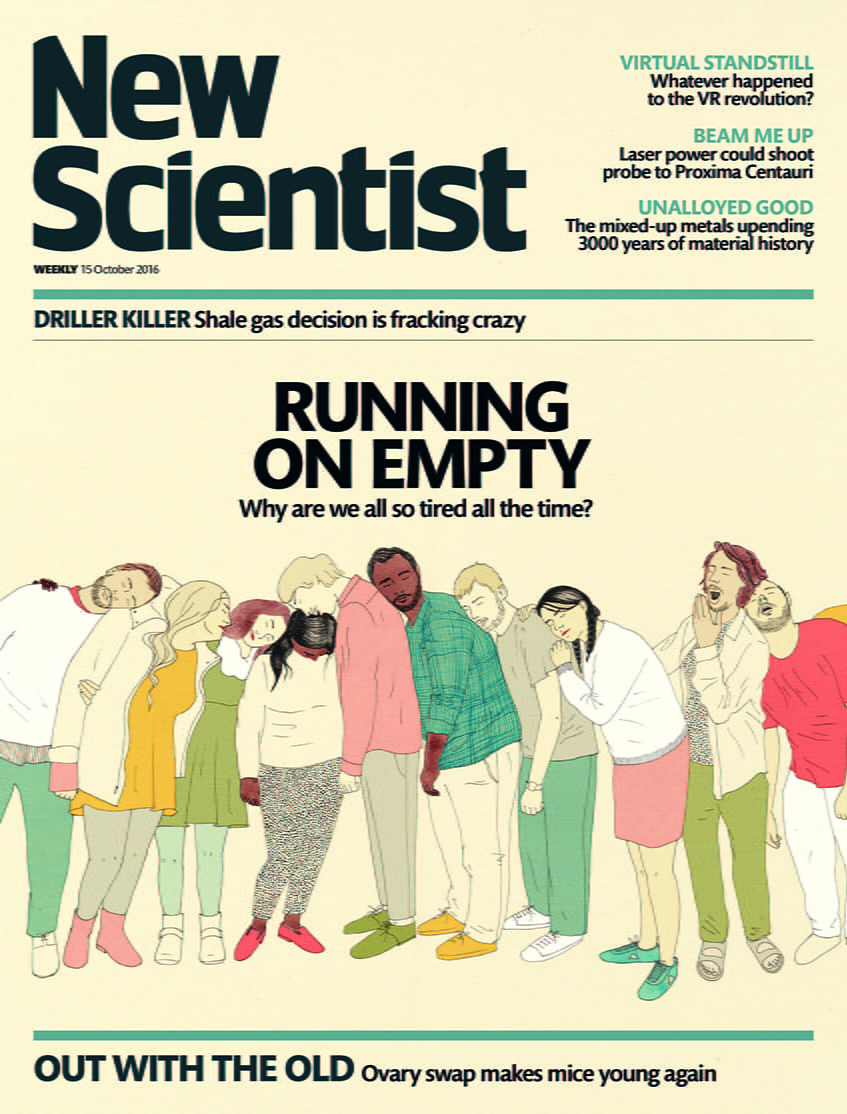 ‘Therapy Today Magazine’ Editorial by Harrier Lee Merrion
‘Therapy Today Magazine’ Editorial by Harrier Lee Merrion
I’ve been working as an illustrator for several years now, having graduated from Falmouth University in 2013. I’m particularly interested in portraying narrative through visual metaphors and poetic imagery, which often gives my work a dreamlike, surreal quality. I loved my time studying illustration at Falmouth; the course and the tutors’ teaching were fundamental to my learning and development as an illustrator.
 ‘Therapy Today Magazine’ Editorial by Harrier Lee Merrion
‘Therapy Today Magazine’ Editorial by Harrier Lee Merrion
 ‘Therapy Today Magazine’ Editorial by Harrier Lee Merrion
‘Therapy Today Magazine’ Editorial by Harrier Lee Merrion
Many of the self-initiated projects I completed at Falmouth were important stepping-stones in my stylistic development, and many of those projects are still used in my portfolio now. The linear quality of my work developed as an outcome of my interest in intaglio printmaking, which I studied half way through my second year on an Erasmus to Finland. One of my final year projects was a series of etchings based on ‘The Symposium’ by Plato, a philosophical text following several Athenian philosophers’ musings on love. It was the material restraint of working with an etching plate that had a direct effect upon my aesthetic and resulted in the use of minimal line in my drawings now.
The isometric perspective I use in my work is influenced by Japanese woodblock prints from the Edo-period. I first used this style of perspective after reading ‘After Dark’, a novel written by Haruki Murakami. The opening chapter describes the city from up high. ‘Eyes mark the shape of the city. Through the eyes of a high-flying night bird, we take in the scene from mid-air’. The pairing of this perspective and the story, (given the context of both influences being Japanese) seemed so natural to me. The use of off-coloured paper in my work is an influence of my love of age stained illuminations, drawings and engravings.
 ‘After Dark’ Written by Haruki Murakami, Personal Work by Harrier Lee Merrion
‘After Dark’ Written by Haruki Murakami, Personal Work by Harrier Lee Merrion
These projects were made while studying and were an exploration of my interests in literature, history and philosophy. While they weren’t commercial pieces, it was these self-initiated projects that informed the style and themes that occur in my work now. It’s important to create work in your portfolio that reflects the type of commissions you’d like to attract. The importance of creating a portfolio that reflects your personality and interests is vital if you want to attract like-minded organisations, to make your work fulfilling and enjoyable as an illustrator.
In my final year at university, myself and nine other friends set up a collective called ‘Beginning-Middle-End.’ We worked collaboratively in designing and producing a hand-bound, illustrated book every week. Individually we’d illustrate a page of the book, consisting of a wordless narrative over three panels, and together we’d print and bind the books at the end of each week. The illustrated panels contributed to our portfolios and in retrospect working on these books was a learning curve, and helped me get used to working to quick deadlines. The books were also a form of self-promotion as we posted them to publishers and art directors.
To mark the end of our course at Falmouth, we travelled to New York as part of a professional practice trip and arranged various meetings and portfolio reviews with art directors and publishing houses. Getting in touch with these establishments seemed daunting at the time, but it paid off as the feedback and advice I received was invaluable. It enabled me to see a new direction in my work, increased my understanding of how the industry works and also helped to bridge the gap between university and the professional world.
After graduating I worked on a handful of collaborative projects with literary journals, poets and musicians, many of which were unpaid. On principle I think it’s a good idea to say no to unpaid work if it seems unfair or exploitative, but it’s also good to stay open-minded to collaborations, charitable causes, or something that you feel passionate about, if you want to take your work in that direction. In retrospect it was these early collaborations that taught me a lot about working with somebody else, and not just to my own requirements.
I moved to Bristol a little under a year after graduating. For the first year I pretty much worked at the desk in my bedroom, until I eventually joined a shared studio at Hamilton House in Stokes Croft. Making the move from working at home to a studio was a lovely change for me, as I hadn’t realised how my work was beginning to feel quite stagnant working and living in the same environment everyday. The building I work in now is filled with a vibrant mix of artists, small businesses, musicians and craftsmen. My studio I work in is a large open plan space that has about 20 other illustrators, many of whom are Falmouth alumni.
Sharing my work online was definitely a significant step into the commercial world of illustration. On social media platforms my work gathered momentum that led to features in online magazines such as ‘It’s Nice That’ and ‘Juxtapoz.’ This acted as a type of marketing and eventually led to many of my first commissions.
One of my favourite early commissions was for ‘Oh Comely Magazine’. I was asked to be a guest illustrator for their ‘Lost and Found’ issue. The issue featured an interview, pieces of my past work and a handful of commissioned pieces. Two illustrations were based on narrative texts and one was based on the theme ‘Maze’. I designed two repeat patterns for their recipes and playlist page on the theme ‘lost and found’ (which I drew from species of recently extinct flora and fauna, some of which are being reintroduced in the UK).
It was around this time that I was contacted by Heart Agency. I’d contacted them a year previously in the hope of arranging a group portfolio review with other Falmouth Students while we were in New York. We weren’t able to meet at that time, but they’d suggested we keep in touch. One year later they contacted me to arrange a portfolio review, following which they asked to represent me. They’d mentioned that they’d seen my illustrations crop up a few times online, highlighting the importance of sharing your work widely on various platforms.
Having an agent works so well for me because they’re highly experienced at dealing with the more commercial aspects of the business, a side that I found difficult as it would often take my time and focus away from being creative. While having an agent works well for me, I do know some illustrators who thrive and equally enjoy doing the role an agent would do for themselves. Heart produce promotional material, deal with budgets, negotiate contracts, and have an abundance of professional advice.
A favourite project from last year was to illustrate Therapy Today’s international issue on China Counselling and Change. I found this job especially enjoyable, as psychology, wellbeing, and Asian culture are areas of particular interest to me, and have previously been touched on in my work. Another favourite project was for Geo Magazine (Germany) to illustrate different people’s accounts of lucid dreams. I loved working on both these editorial illustrations, as it was the convergence of many of my own interests aligning with commissioned work.
The theme of sleep, dreams and the unconscious has been picked up in my work since. After making those illustrations for Geo I was commissioned to complete an illustrated interview, for Muun (a German mattress company) in collaboration with Ignant (an online magazine). It was one of the more unusual but fun jobs I’ve worked on, culminating in an exhibition in Berlin at the store launch for Muun.
For each job I’m working on I always make it my aim to create an image that could exist as an artwork outside of the original context it was created in. I’ll often sell prints of past work online and at exhibitions in order to give the illustrations longevity outside their original publication. Similarly it’s quite often that images will be re-licenced, for instance the illustrations I made for Geo have since been published in the Latvian, Lithuanian and Russian versions of the magazine.
Last year a career defining moment occurred when I was invited to participate as a guest speaker at the Guadalajara Book Fair in Mexico. I gave a lecture about the development of my career as an illustrator since graduating, and participated in a panel discussion with two other illustrators: Catalina Bu and Mariana Motoko. It was a wonderful experience, meeting other illustrators and it gave me new insight into book publishing and book fairs. This experience inspired me to take the step into creating my own illustrated book, and this year in August I took part in an artist residency in upstate New York for one month where I began to develop the idea for the story. Creative writing is a totally new area for me and it’s an interesting challenge working in a new form that I’m only just beginning to get to grips with.
It’s important to remember the reason you chose this career path, and keep it close. For me I love using illustration as a tool to explore topics I’m interested in. I think if you explore your interests and realise what kind of work will make you happy and fulfilled then you’ll always be working at your full potential. I remember a tutor at Falmouth once telling me if you can’t find commercial work right now, then ‘create your own employment’; if you focus on your own personal projects that you enjoy, eventually your audience will find you.






